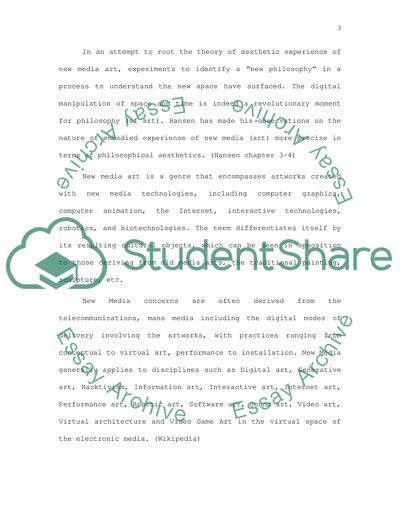Cite this document
(“New Media in Art Essay Example | Topics and Well Written Essays - 4500 words”, n.d.)
Retrieved from https://studentshare.org/miscellaneous/1532795-new-media-in-art
Retrieved from https://studentshare.org/miscellaneous/1532795-new-media-in-art
(New Media in Art Essay Example | Topics and Well Written Essays - 4500 Words)
https://studentshare.org/miscellaneous/1532795-new-media-in-art.
https://studentshare.org/miscellaneous/1532795-new-media-in-art.
“New Media in Art Essay Example | Topics and Well Written Essays - 4500 Words”, n.d. https://studentshare.org/miscellaneous/1532795-new-media-in-art.


